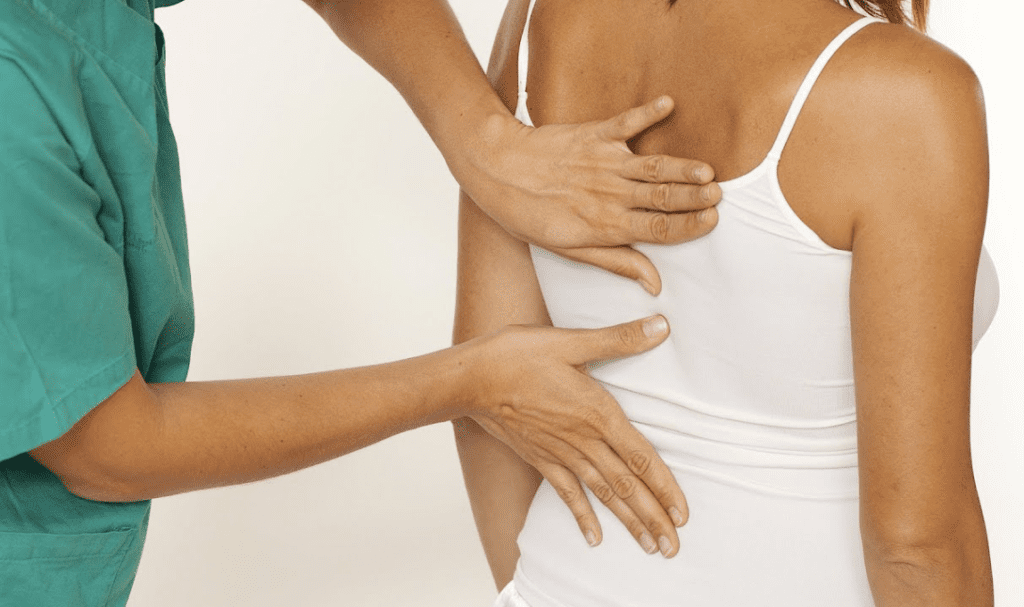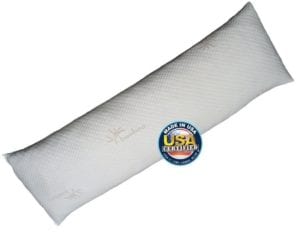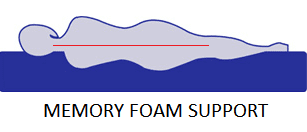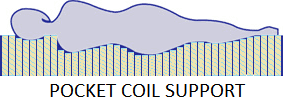
What Causes Back Pain?
Most of us, if not all, have experienced back pain of some level at some time. For a large percentage of us this has been several times. Many persons suffer back pain frequently or constantly, ranging from light to very painful to severe.
There are many causes of pain in the back. A few of these are injuries, genetic deformities, disease, nutritional deficiencies, and postural misalignment. The last one itself has more than one cause.
Postural Misalignment
One leading cause of postural misalignment is poor muscle tone. Ligaments hold bones, including the vertebrae, together, and tendons attach muscles to the bones. It is our muscles which hold the bones in the spine in alignment. If the muscles are too weak, for example when we are fatigued, holding the spine in line is harder to do. Proper exercise and nutrition along with adequate rest help maintain good muscle tone.
Another frequent cause is habitually poor posture. We train our muscles to keep our back in a certain position. They can be trained the wrong way through repetition of bad posture. The good news is that we can retrain our muscles by consciously holding our backs in a good position. It may take a while, because bad habits don’t easily give up.
Spinal Stenosis
Another cause of back pain is spinal stenosis, narrowing of the spinal cavity (the space the spinal cord passes through). The most common site is the lumbar (lower back), and the second most common is the cervical spine (neck). This is usually caused by osteoarthritis, the result of aging or injuries. In some cases, it is related to the formation of bone spurs, including inside a vertebra (some persons are prone to this).
Lifting, Moving
Back pain may be associated with certain activities which aggravate the pain. Lifting or moving heavy items the wrong way can injure the back, straining muscles and tendons, tearing ligaments, and pulling vertebrae out of place. Many employers, especially in manufacturing and construction, train their employees how to safely move and lift objects to prevent back injuries. This pays off for them in reducing occupational injury claims. It is well if we learn this for our own good.
Morning Backaches
Backaches are most often associated with getting up in the morning or with long periods of sitting. What do lying down and sitting have in common? Spinal posture. How we lie and how we sit determines the configuration of the spinal column for that period of time. In both cases – less for sitting, more for sleeping – back muscles relax, letting the seat or the bed support the vertebrae. If the spine is not kept in proper posture, this results in strained ligaments, misaligned vertebrae, and pinched nerves. Also, unused muscles may become cold and stiff.
Solutions for Back Pain
Back Sleeping
Lying on one’s back is the best sleeping position for the back. It keeps the back in a good side-to-side position and allows it to keep its natural front-back curves. In this case the mattress needs to be firm enough to support the thoracic (chest) vertebrae and the hips. If needed, a thin cushion can support the lumbar. A wedge under the knees (for example this one sold by Relief-Mart) can keep the legs slightly bent for a natural position of the lumbar. An adjustable bed can raise the head and upper body, making it easier to breathe, and elevate the knees for a better back position.
However, sleeping on the back is not the best position for those with sleep apnea. In this case, side sleeping is the best option for breathing. But this is not the best position for the spine, unless one has certain back conditions, such as spinal stenosis or osteoarthritis of the facet joints. In these cases, sleeping on the side in a fetal position will relieve pressure on the back edge of the vertebral joints.
Stomach Sleeping
Another sleeping position is on the stomach. This has advantages for some back conditions, but it is hard on the neck, since the sleeper has to turn the head to one side or the other. A body pillow with a high center makes it easier on the back. It also lifts the body enough to make it easier on the neck. The top-rated body pillow sold on Amazon is the Snuggle-Pedic Body Pillow.


Side Sleeping
For side sleeping, the mattress has to be not as firm as it can be for back sleeping. In order to keep the spine in line, the mattress has to sink in at the shoulders, and sink even more at the hips. At the same time, it still has to hold up the lumbar. Looking at the sleeper horizontally, the backbone should follow a straight line.
Mattress Type & Quality
Two kinds of support are more efficient providing this kind of support than others, pocket coils and memory foam.
Pocket Coils
In 1900 James Marshall invented pocket coils specifically to provide pressure relief for his wife. The coils are not tied to their neighbors, so they can respond independently, one receding under a larger, heavier part, and another pushing up against a smaller part. This reduces pressure, but the depressed coils are still pushing up, with some pressure on hips and shoulders.
Not as conforming, but better than Bonnell Coils and continuous coils, are LFK offset coils. The open ends at the top side of the innerspring give them a measure of conformity.
Memory Foam
Tempur-Pedic introduced the first memory foam mattress 91 years after Marshall patented pocket coils. Memory foam has an advantage over pocket coils. First of all, it is temperature sensitive. This means that it gives in more when there is more body heat, creating a body-shaped pocket with even less pressure on large joints than pocket coils. Then the conformity is continuous. The fineness of pocket coil conformity is limited by the diameters of the coils, making the line more blocky than that of memory foam.


The first memory foam mattresses were a 3” layer of 5.3-lb memory foam on a 5” base of very firm polyurethane foam. Since the memory foam was very temperature sensitive as well as very dense, it did not conform immediately, but first warmed up with body heat. After that, the foam became very warm because it kept absorbing heat, and being very dense it could not release heat easily.
Dr. Rick Swartzburg, who slept on a Tempur-Pedic mattress, set out to improve on the design. He divided the memory foam into two layers. The top layer was only 4 lbs, so it was not as temperature sensitive, but more pressure sensitive. It began cushioning as soon as a sleeper lay on it. The second layer was the 5.3-lb memory foam, so as it warmed up it conformed. This also made it easier for a sleeper to move in bed, since the top layer adapted more quickly. Counting the base, this made three layers, so the new mattress was dubbed Tri-Pedic. The Tri-Pedic was also more adaptive to sleep positions, whether side or back sleeping.
Quality and Type
The quality and type of the mattress make a significant difference in the health of one’s back. Sleep Like The Dead (STLD) charted the amount of sagging in the middle of mattresses with complaints about back pain. The greater the sagging, the more complaints. Foams that are denser and higher quality last longer with less sagging. Memory foam made in Asia is usually of lower quality.
STLD also charted back pain complaints against mattress types. Futons and innerspring mattresses had the greatest number of complaints. The fewest were for air beds and memory foam.
Sitting
As to sitting and back health, don’t slouch or hunch over. It is important to use a chair that keeps the back straight while working on a desk or at the computer. The best chair is adjustable for the height, the angle of the seat, and the angle of the back. Also, Dr. Rick Swartzburg advises us to get up and move around frequently when we have to sit for a long time.
The height of the table is important, since the user should be able to keep his or her feet flat on the floor comfortably with the top of the table level with the elbows. Adjustable tables/desks are preferred, but if you can’t change the height of the table you can use a foot stool. The goal is to keep the back in good posture.
Cushions on the chair also count. Before being used in mattresses, memory foam was used in seat cushions. The original NASA material was for astronauts’ launch seats. A good cushion relieves pressure on the hips and the lower back. And a good back cushion makes resting against the back of the chair more inviting.
Conclusion
If you have consistent back pain, note when you have it. If it is worse when you get up, then your sleeping position and/or the mattress is a problem. If it is worse after office work, look at your chair. Meanwhile, be sure that you are getting proper nutrition and enough exercise, and you are maintaining good standing and sitting posture.
Sources
#1 Back Pain Site – http://www.1backpain.com/
Spine-Health – http://www.spine-health.com/wellness/sleep/choosing-best-mattress-lower-back-pain
Sleep Like the Dead – http://www.sleeplikethedead.com/mattress-bad-back.html
Mattress Guides – https://www.mattress-guides.net/top-premium-mattresses-chronic-lower-back-pain/
Web MD – http://www.webmd.com/sleep-disorders/features/how-to-pick-your-perfect-mattress#1
Pain Science – https://www.painscience.com/articles/morning-back-pain.php
PubMed Health – https://www.ncbi.nlm.nih.gov/pubmedhealth/PMHT0024991/

